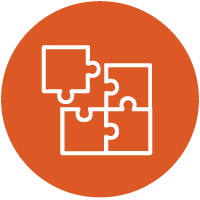
Tools
- Diminuer la taille du texte
- Augmenter la taille du texte
- Imprimer la page

- Diminuer la taille du texte
- Augmenter la taille du texte
- Imprimer la page

- Diminuer la taille du texte
- Augmenter la taille du texte
- Imprimer la page

- Diminuer la taille du texte
- Augmenter la taille du texte
- Imprimer la page

- Diminuer la taille du texte
- Augmenter la taille du texte
- Imprimer la page

WHO Action Network on Measuring Health Literacy in Populations and Organizations (M-POHL)
- Diminuer la taille du texte
- Augmenter la taille du texte
- Imprimer la page

- Diminuer la taille du texte
- Augmenter la taille du texte
- Imprimer la page

- Diminuer la taille du texte
- Augmenter la taille du texte
- Imprimer la page

- Diminuer la taille du texte
- Augmenter la taille du texte
- Imprimer la page

Aim and objectives:
The Health Literacy Pathway Model describes how health literacy develops along a trajectory that enables individuals supported by others, to seek, engage with and act on health information to manage their health and become actively involved in health system consultations and informed decision-making.
Target group:
Patients with a long-term condition can develop health literacy skills over time and put their skills into practice in becoming more active in health system consultations.
Method:
The method entails development of knowledge, health literacy skills and practices, health literacy actions, abilities in seeking options and informed and shared decision-making opportunities.
Outcome:
Applying the health literacy pathway in practice, helps to identify the motivations and barriers to developing and practising health literacy skills while also taking into account the characteristics of the individuals as well as the health professionals.
Added value:
Developing the health literacy pathway supports people to become more involved in health system processes, including informed and shared decision-making.
Figure : The supported health literacy pathway .
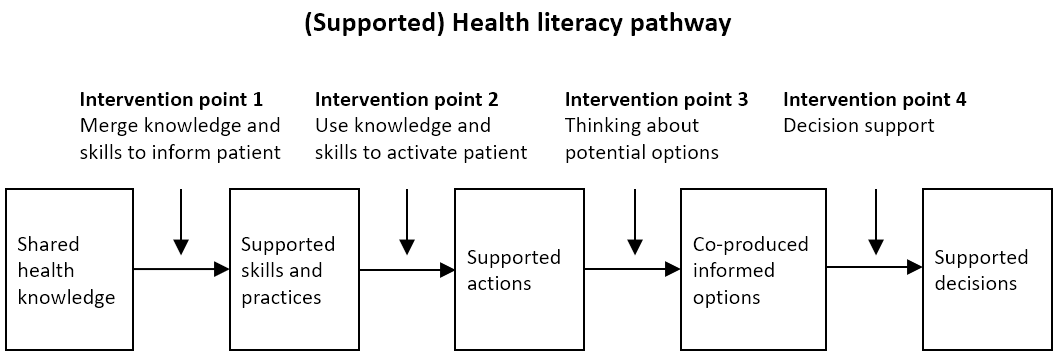
Figure : The supported health literacy pathway
- Diminuer la taille du texte
- Augmenter la taille du texte
- Imprimer la page

- Diminuer la taille du texte
- Augmenter la taille du texte
- Imprimer la page
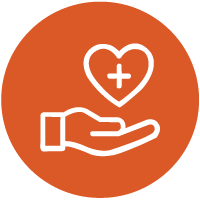
Aim and objectives:
The focus on health literate organisations highlights the need for them to facilitate a coherent and smooth journey for users of the health system. Patient journey mapping (see example below) is a way to visualise and obtain an overview of patient experience during their entire care journey.
Method:
A patient journey map (also known as health system customer journey map) is an outline of all the touchpoints a patient goes through in their care journey in a health system facility. This includes all the touchpoints pre-, during, and post-visit.
Outcome:
This method provides insights into patient experiences during their care journey in a health system facility and the patient flow in general to create strategies to improve the quality of care, increase efficiency, and improve patient satisfaction.
Added value:
Patient journey mapping is an increasingly valuable tool for health organisations and companies of all types and sizes, for many applications. The benefits include highlighting the obstacles patients face in accessing care; define how to deliver a better patient experience during treatment; and identify ways to support patients after treatment ends.

Figure: Example of health system customer journey map
- Diminuer la taille du texte
- Augmenter la taille du texte
- Imprimer la page
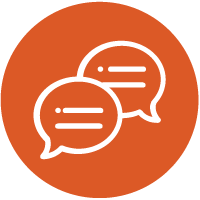
Aim and objectives:
Ask Me 3® is an educational program developed by the Institute for Healthcare Improvement that encourages patients and families to ask three specific questions of their providers to better understand their health conditions and what they need to do to stay healthy.
Target group:
Designed by health literacy experts, Ask Me 3® is a quick, effective tool designed to improve health communications between patients, families, and health providers and help patients become more active members of their health care team.
Method:
Ask Me 3® promotes three simple but essential questions that patients should ask their providers in every health care interaction and providers should always encourage their patients to understand the answers to:
- what is my main problem?
- what do I need to do?
- why is it important for me to do this?
Outcome:
Ask Me 3® is simple to use, inexpensive to implement and facilitates simple communication.
Added value:
Active participation empowers patients and makes the conversation easier for the health provider. Questions prompted by patients give health providers clues to the level of understanding, acceptance, and insight of the condition which in turn may guide the health professional to deliver timely and appropriate information.
- Diminuer la taille du texte
- Augmenter la taille du texte
- Imprimer la page

Aim and objectives:
The Brach model highlights ten attributes of health literate organisations.
Target group:
The Brach model can be used for strategic planning by health professionals, providers and decision-makers.
Method:
The model describes ten action areas for health providers and managers to develop and improve to become a health literate organisation:
- leadership that makes health literacy integral to its mission, structure, and operations;
- integration of health literacy into planning, evaluation measures, patient safety, and quality improvement;
- training of workforce to be health literate and monitor progress;
- involvement of populations served in the design, implementation, and evaluation of health information and services;
- meeting the needs of populations with a range of health literacy skills while avoiding stigmatisation;
- applying health literacy strategies in interpersonal communications and confirm understanding at all points of contact;
- provision of easy access to health information and services and navigation assistance;
- designing and distributing print, audio-visual, and social media content that is easy to understand and act upon;
- addressing health literacy in high-risk situations, including care transitions and communication about medicines;
- clear communication of what health plans cover and what individuals will have to pay for services.
Outcome:
The Brach model has been influential in the agenda-setting for structural efforts to improve health literacy.
Added value:
Applying a strategic approach in the implementation of health literacy strengthens the impact of health literacy across the organisation and beyond.
- Diminuer la taille du texte
- Augmenter la taille du texte
- Imprimer la page

Aim and objectives:
The Health Literacy Tool Shed is hosted by Boston University. It is an online database of more than 200 health literacy measures. The site contains information about measures, including their psychometric properties, based on a review of peer-reviewed literature.
Target group:
It is a database for researchers, decision-makers, and health providers. It helps them identify the most relevant measurements to use in health literacy research, needs assessments, evaluations, etc.
Method:
It is an open-source database, freely available to all users.
Outcome:
It enhances the opportunities for choosing the most relevant tool for a certain research purpose.
Added value:
The Health Literacy Tool Shed makes it possible to gain access to cutting-edge measurement tools. Previously, the review of such tools was published in scientific journals. The Health Literacy Tool Shed democratised accessibility to these measurements and accelerated the speed of knowledge-sharing and use of appropriate measurement tools.
- Diminuer la taille du texte
- Augmenter la taille du texte
- Imprimer la page

Aim and objectives:
Teach-Back is an activity in which learners teach each other what they have learned, for instance, by using verbal explanations, demonstrations, and skits.
Target group:
According to the US Agency for Healthcare Research and Quality, Teach-back is a technique for health care providers to ensure that they have explained medical information clearly so that patients and their families understand what is communicated to them. This intervention includes several materials to support adoption.
Method:
The method is a way of checking understanding by asking patients to state in their own words what they need to know or do about their health and to confirm that things have been explained in a manner that patients understand. Teach-back can be applied whenever explaining important and complex concepts to patients about their health care, such as a new diagnosis, medication, home care instructions, treatment plans, behavioural change recommendations, the use of new devices, treatment options and follow-up instructions.
Outcomes:
The resources needed for Teach-back are modest. Health providers can implement Teach-back as part of their regular duties. The time of implementation using this practice is minimal in the short run and can save much time in the long run.
Added value:
Using Teach-back systematically will help remove barriers and challenges to improve communication and processes.
- Diminuer la taille du texte
- Augmenter la taille du texte
- Imprimer la page

Aim and objectives:
Most text-based health information continues to be too hard for most adults to read. While plain language is only one of many broad-based solutions needed to address limited health literacy, the benefits to everyone call for increased use by health organisations.
Target group:
Given that clinical research communications can be very technical and complex, using plain language can help clearly explain information so that the target audience has a better chance of understanding. The target group can be patients, caregivers, other actors in the health eco-system involved in solving health challenges.
Method:
Plain language helps the reader to:
- find what they need;
- understand what they find;
- use what they find to meet their needs.
Outcomes:
Applying plain-language principles facilitates relevant health information for the audience, keeping it simple, making sure its readable, and making it timely and actionable.
Added value:
Plain language supports access to information, equity, and participation in society. It also improves efficiency and builds brand trust.
- Diminuer la taille du texte
- Augmenter la taille du texte
- Imprimer la page

Aim and objectives:
Mapping linguistic landscapes is used to gain insights in how people navigate health systems and to improve health system environments.
Target group:
It is a tool for health providers, managers, and decision-makers to enhance service design and user journeys.
Method:
Using linguistic landscape analysis as a diagnostic, relevant questions may include:
- how many and what languages occur on signs in a specific public space?
- are the signs monolingual, bilingual, multilingual and in what ways, i.e. what combinations of languages occur?
- are different languages used for different contents and in different domains?
- in what forms do signs occur (notice boards, traffic signs, billboards, shop windows, posters, flags, banners, graffiti, menus, T-shirts, Facebook, Twitter, Instagram, Blogs, Websites)?
- what about the language in terms of normativity: orthography, handwriting conventions, lexicon, syntax, literacy level?
A next step would include a more in-depth analysis and interpretation of the signs. Looking at deeper layers of meaning connected to the signs that can explain what they refer to in addition to their referential meaning is also called the indexicality. Examples include to study the past (e.g., the conditions of production), the future (e.g., the conditions for uptake), and the present (e.g., at the specific placement of the sign among other signs).
Outcome:
Mapping linguistic landscapes is a way to study visible semiotic signs in public spaces and to study how language includes or excludes people from communication and full participation in social and societal contexts.
Figure : Example of linguistic landscapes - signposting in hospitals
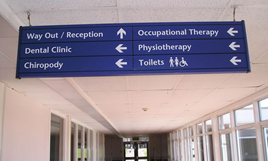
- Diminuer la taille du texte
- Augmenter la taille du texte
- Imprimer la page

Aim and objectives:
Each Ophelia (OPtimising HEalth LIteracy and Access) project seeks to improve health and equity by increasing the availability and accessibility of health information and services in locally appropriate ways.
Target group:
The Ophelia Approach involves the collaboration of a wide range of community members, community leaders, and workers to develop health literacy interventions that are based on needs identified within a community.
Method:
The method focuses on the development of interventions in local communities. It draws on intervention mapping, quality improvement collaboratives, and realist synthesis. The intervention protocol is outcomes-oriented and focuses on two key questions: 'What are the health literacy strengths and weaknesses of clients of participating sites?', and 'How do sites interpret and respond to these to achieve positive health and equity outcomes for their clients?'.
The first phase is a needs assessment that uses the Health Literacy Questionnaire (HLQ), a multi-dimensional measure of health literacy, to identify common health literacy needs among clients. The second phase involves front-line staff and management within each service organisation in co-creating intervention plans to strategically respond to the identified local needs. The third phase will trial the interventions within each site to determine if the site can improve identified limitations to service access and/or health outcomes.
Outcomes:
Improving health literacy outcomes and responsiveness locally.
- Diminuer la taille du texte
- Augmenter la taille du texte
- Imprimer la page

Aim and objectives:
Data visualisation, such as the use of infographics and graphs, has become a meaningful way to present medical data that impacts decision-making on a collective and individual level to enhance health literacy.
Target group:
Applying visual elements and plain language help bring an individual with limited health literacy and numeracy skills to an outcome that equates to better health behaviours and practices.
Method:
Data visualisation involves breaking down the data points in terms of time, place, and elements of which people are familiar with, or personalising/localising numbers to make them more digestible and meaningful. Data dashboards may be effective visualisation tools for tracking and visualizing data from multiple sources including e.g., tables, pie charts and stacked bar charts, line graphs and area graphs, histograms, scatter plots, heat maps and tree maps. It might also be combined to infographic including icons and minor text to show a visual narrative.
Outcome:
Storytelling with data through simple graphs, comparative charts and representational icons often helps to make the implicit explicit to enhance individual and population health.
Added value:
Data visualization can improve understanding and analyses, as well as enabling better and faster decision making.
- Diminuer la taille du texte
- Augmenter la taille du texte
- Imprimer la page


